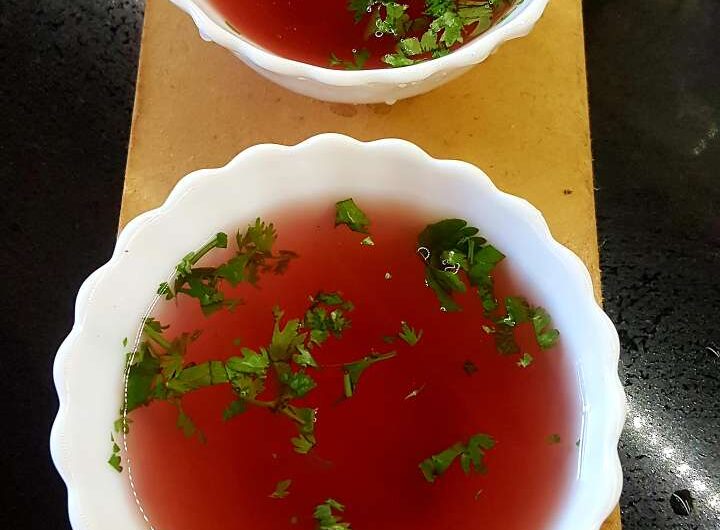Tival recipe with step-by-step photos and instructions. Goan Kokum Curry without coconut milk.
Tival is also known as ‘Futi Kadi‘ or ‘Tambdi Kadi‘. The word ‘futi‘ implies without coconut milk. Thus, tival is a digestive drink without coconut milk. On the other hand, its counterpart the Solkadhi or Solkadi is prepared using coconut milk. Both are great digestive drinks and summer coolants too.
I love this version of kokum kadhi without coconut milk. Curries without coconut serve as great drinks post lunch or dinner. This kokum curry recipe is easy to prepare and uses easily available ingredients.
What is Tival?
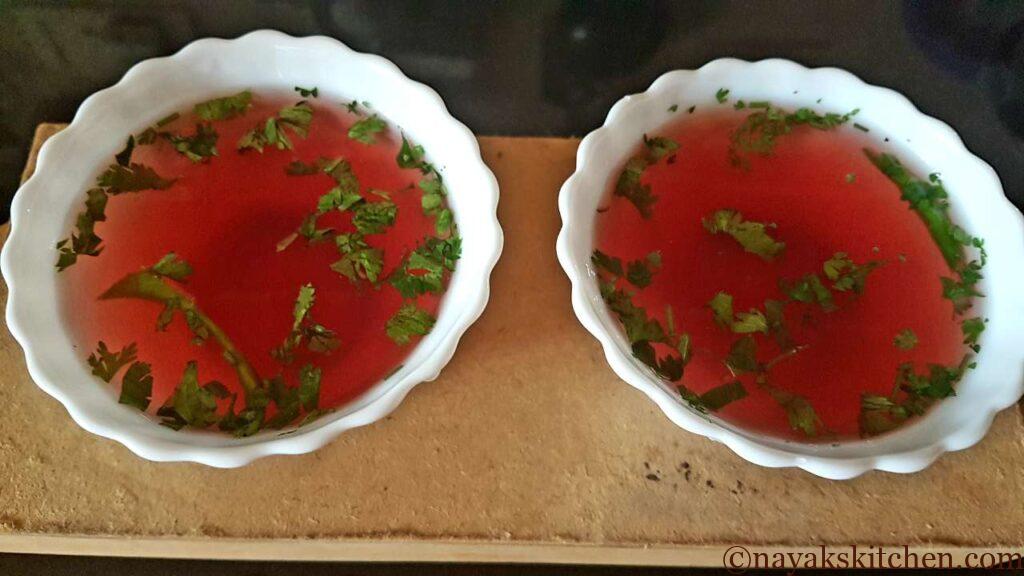
Tival is a drink prepared using kokum, green chillies, asafoetida (hing) etc. This kokum kadhi is usually served at the end of a Goan meal. Tival helps in digestion, especially the spicy, heavy Goan fish-curry rice. A Goan thali will usually have a small vati (bowl) of kokum kadi or tival.
While the kokum Solkadhi needs extraction of coconut milk, tival is easy to prepare. It uses some basic ingredients from the pantry and can be prepared in a jiffy too.
What is Kokum?
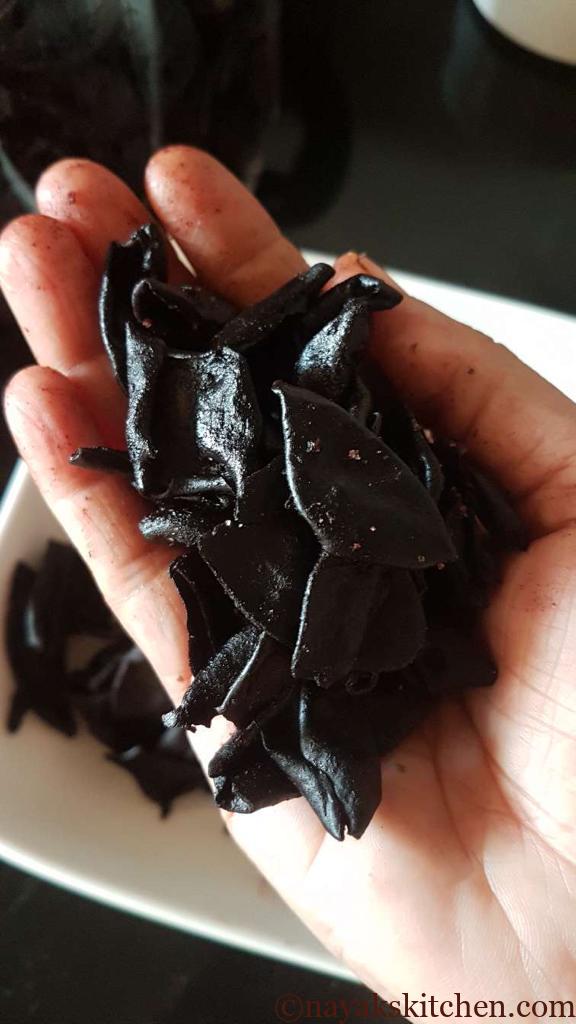
Kokum (scientific name Garcinia Indica) is a plant of the mangosteen family. The Kokum contains an active ingredient called ‘Garcinol’ from which it derives its scientific name. Garcinia Indica, commonly known as kokum, sola or amsul, has a wide variety of culinary, industrial, cosmetic and pharmaceutical uses.
Kokum is cultivated along the Western Ghats and some regions of northeast India. It is also found in the Andaman and Nicobar Islands and Orissa to a lesser extent. However, it is undoubtedly the culinary jewel of coastal cuisine. It acts as a souring agent in Goan cooking. Kokum is an essential ingredient in the cuisines of Assam and Gujarat too.
To know more about the Kokum, its characteristics and benefits check out the post below;
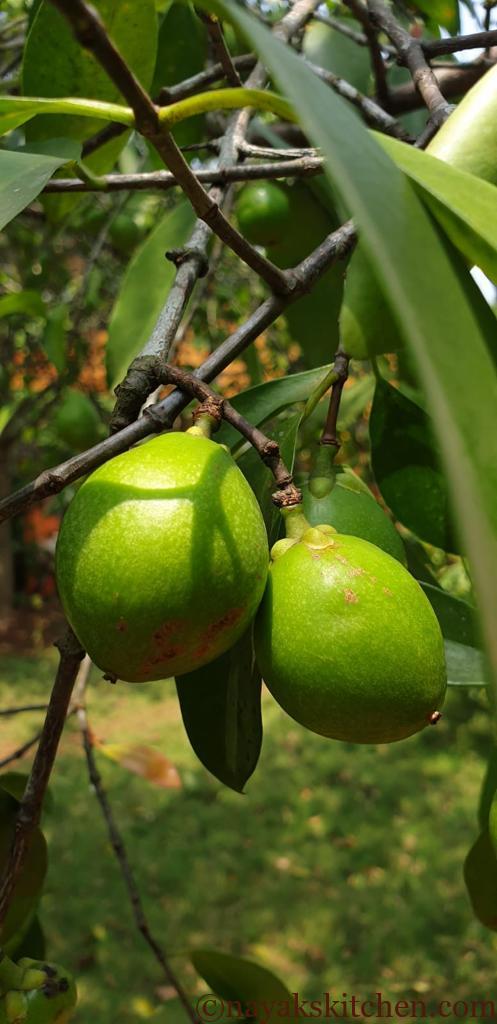

Tival Recipe Ingredients
This kokum drink recipe requires some basic ingredients.
- Kokum/Sola/Amsul
- Green chillies
- Asafoetida
- Garlic (optional)
- Salt and Sugar
- Green Coriander
Health Benefits of Tival
Besides being a great digestive drink ‘Tival’ has many health benefits.
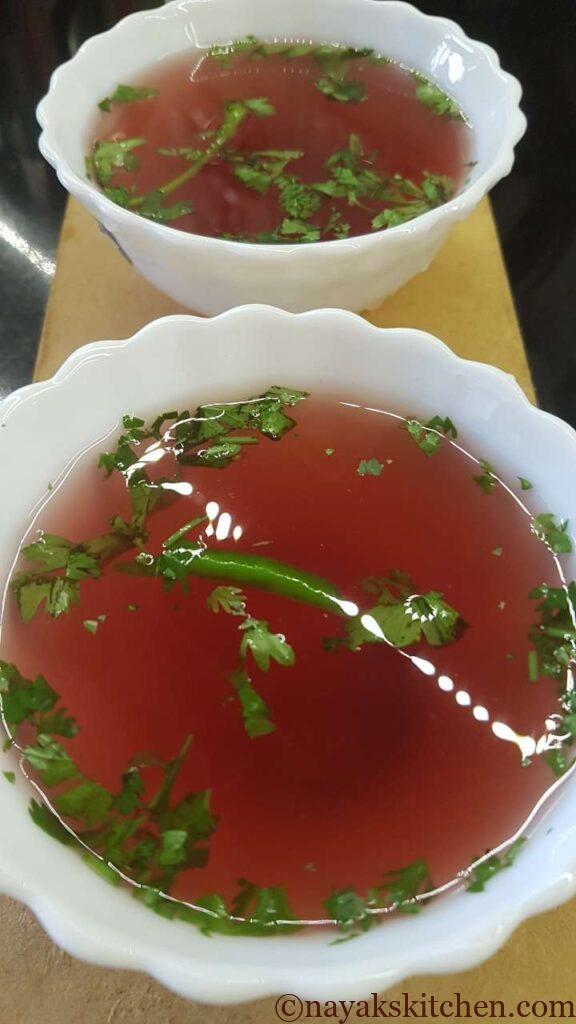
- Tival aids in digestion and also relieves constipation and flatulence.
- Due to its cooling properties this kokum drink is a great remedy for acidity. Fresh tival during summers helps beat the heat and prevents dehydration.
- In addition, it has anti-viral and anti-bacterial properties. So it helps prevent infections. As a result, it is great to boost your immunity.
- Protects the diverse gut flora and thus benefits gut health.
Tips for Tival recipe
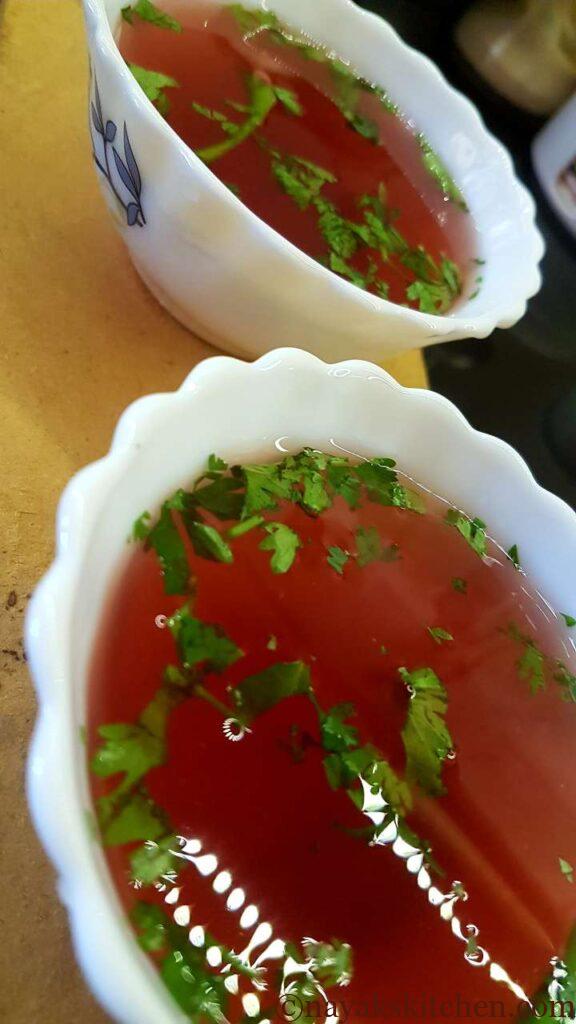
- Kokum – The colour, taste and flavour of tival depends on the quality of kokum. Always preferably use fresh kokum. Aged kokum will not give a bright pink colour. In case your kokum is not fresh use warm water for soaking. Also, if your kokum is fresh you will need to add a few rinds else add more kokum to get a thick extract. So adjust accordingly. You can also use 1 tsp of kokum agal (Kokum extract) instead of kokum rinds.
- Green chillies – Adjust the green chillies as per your spice level and also the heat of the chillies.
- Asafoetida (Hing) – Use good quality hing with a strong aroma.
- Garlic – The use of garlic is optional and you can skip it.
- Water – Since this is a no-cook recipe use fresh drinking water to prepare tival.
- Serving Suggestions – Serve tival along with lunch or dinner. You can remove the kokum, garlic and chillies before serving.
- Storing Suggestions – You can refrigerate the tival for a day.
- This recipe can be doubled or tripled.
How to make Tival?
- Add kokum or sola to fresh drinking water. (However, if you are using old or aged kokum, use warm water to get more kokum extract.)
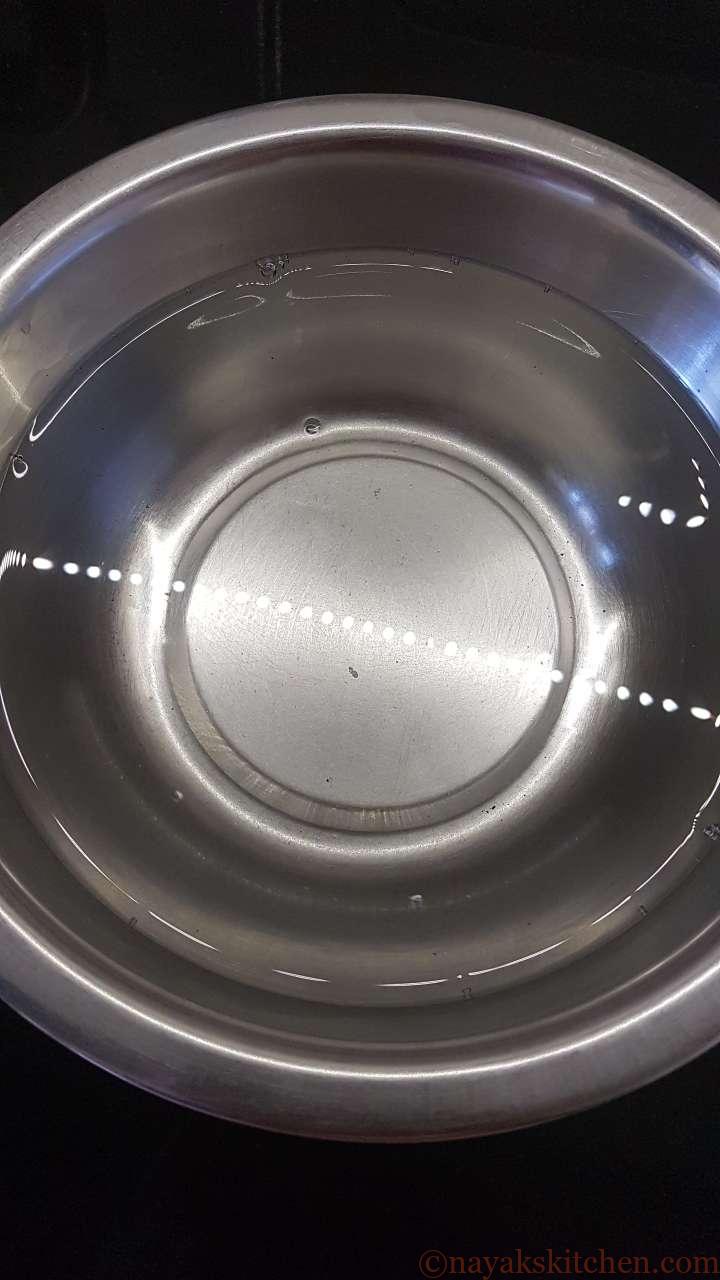
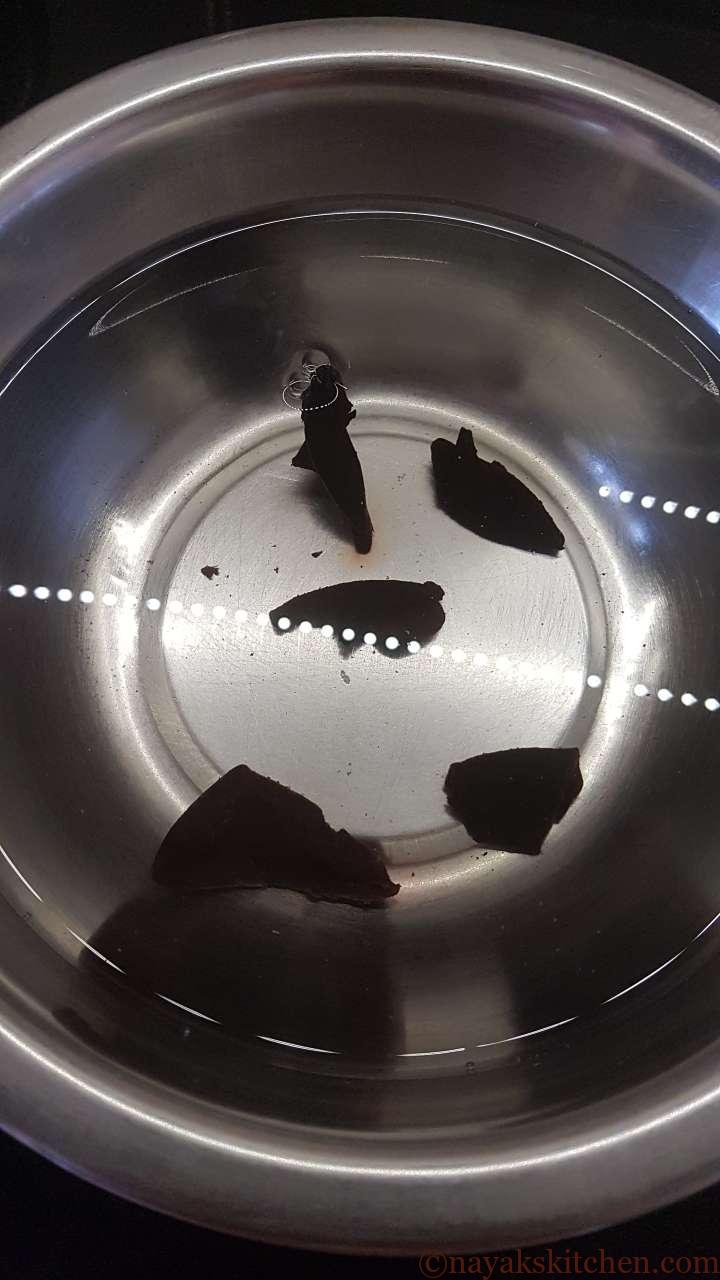
2. After some time, the kokum rinds will start releasing their extract. You will get a bright pink colour with fresh kokum.
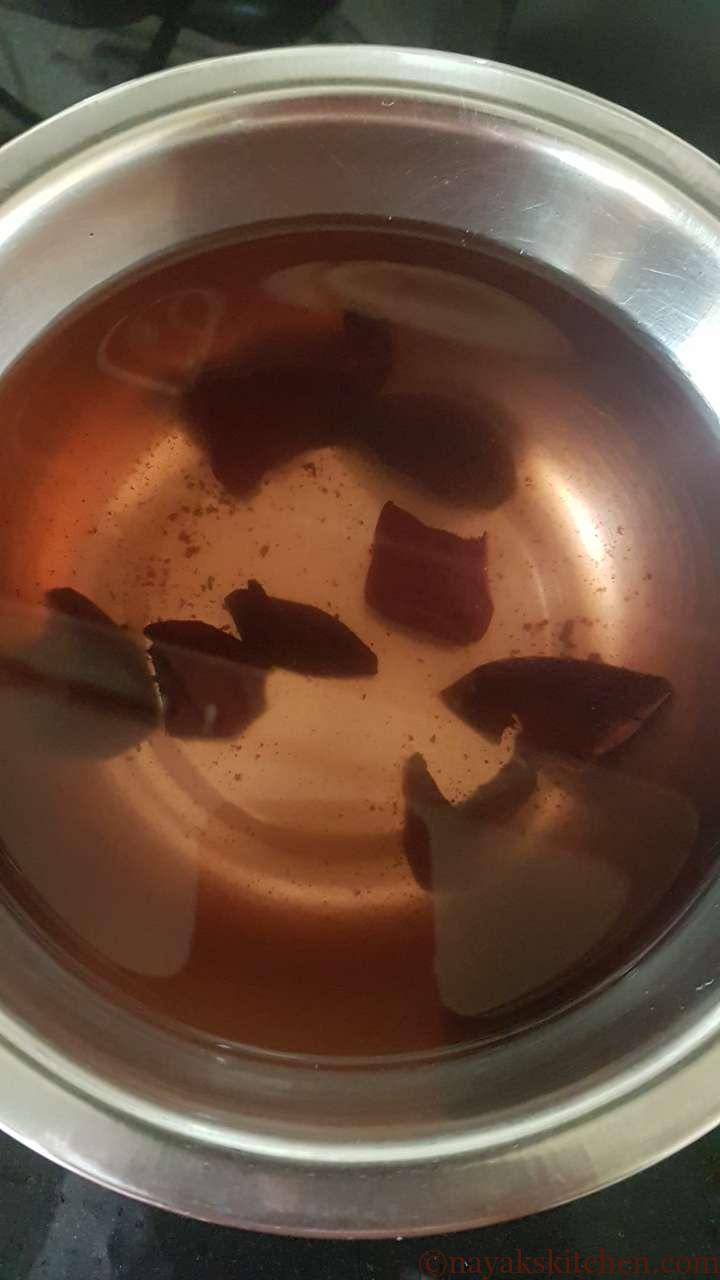
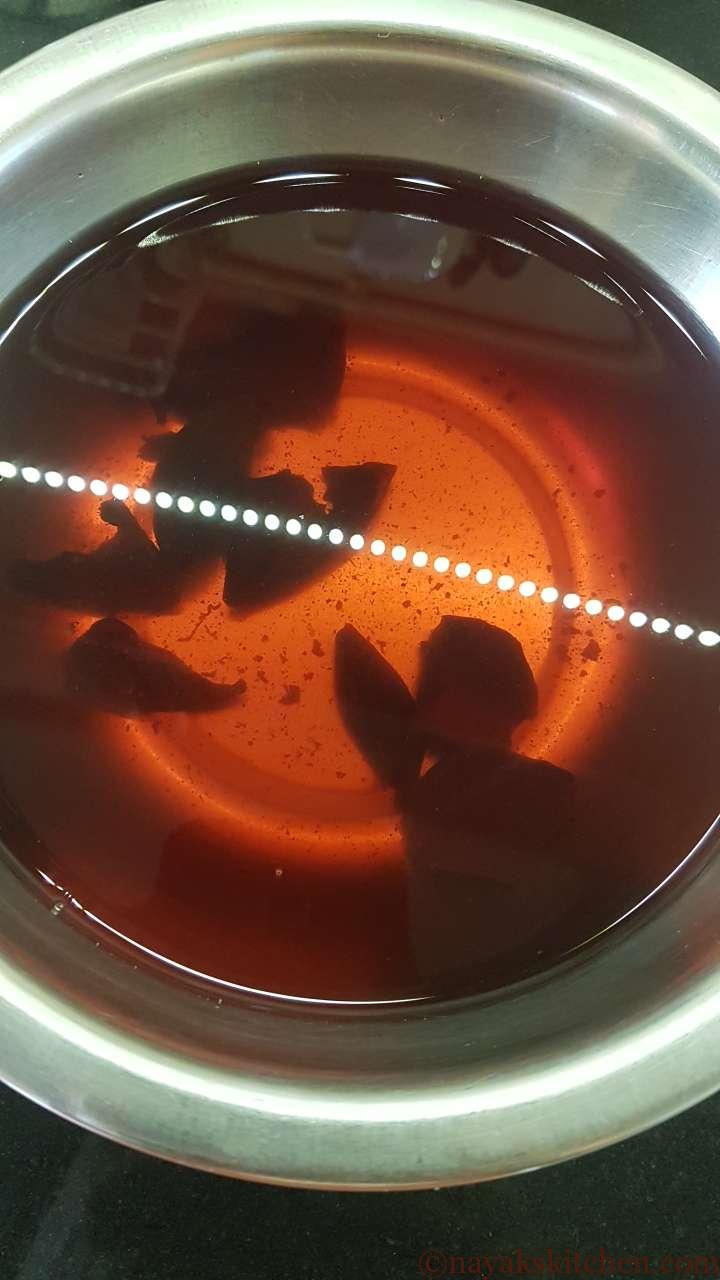
3. Add the slit green chillies and crushed garlic.
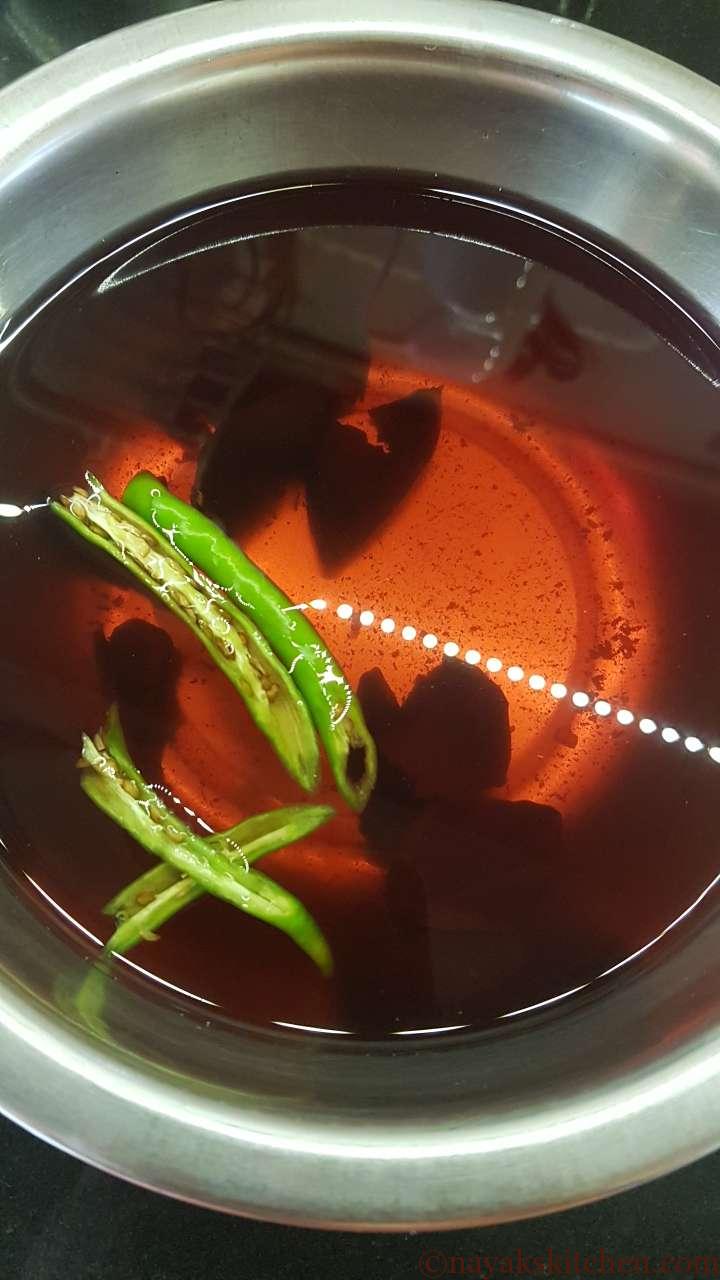
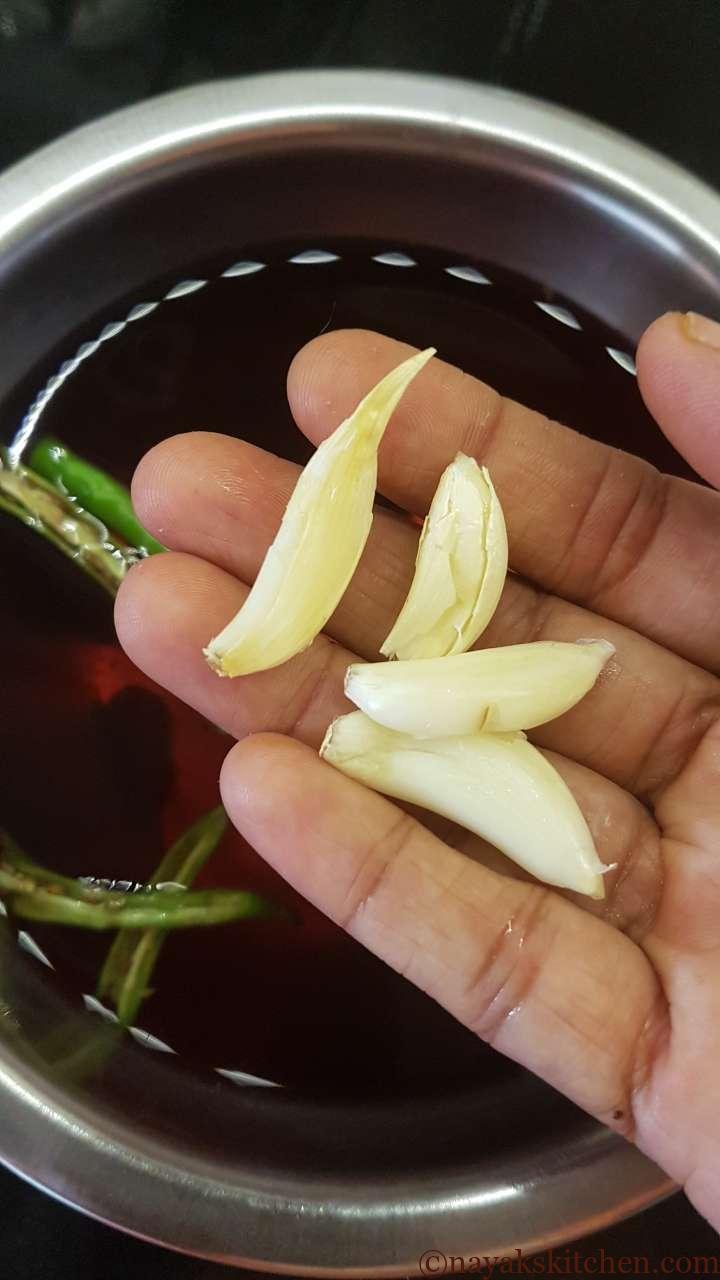
4. Next add asafoetida (hing) and sugar.
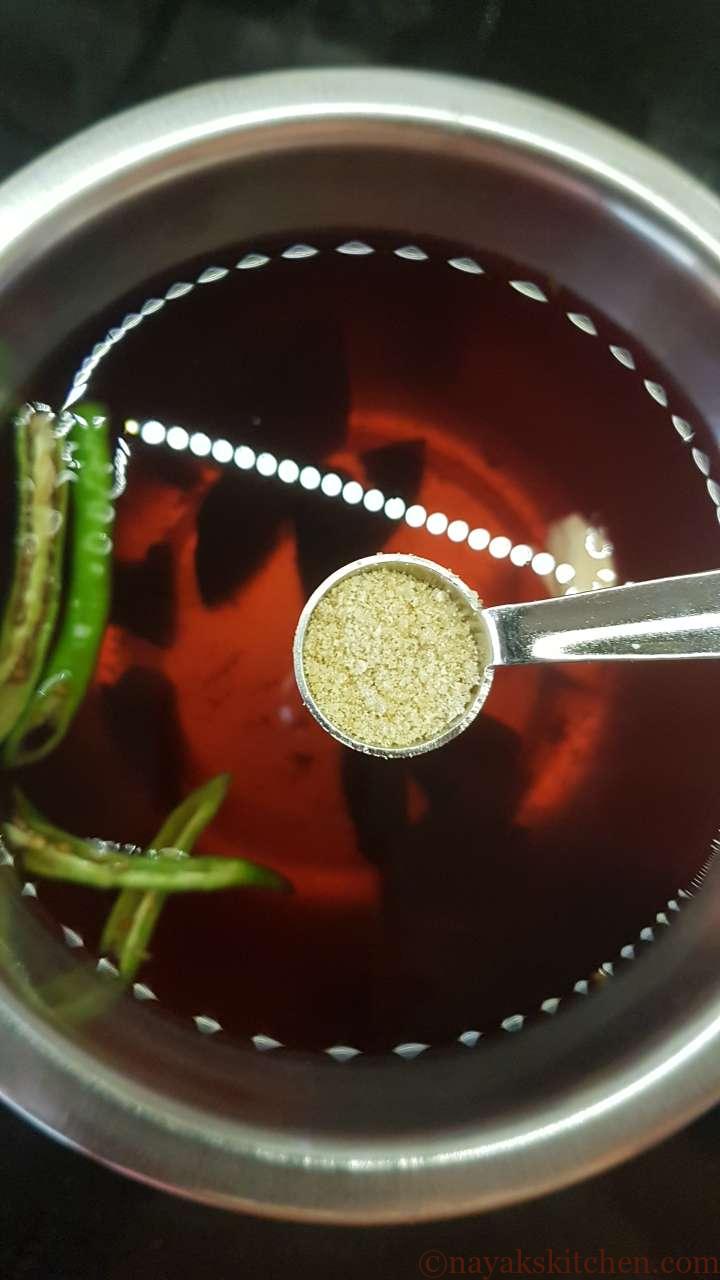

5. Finally add salt and mix everything well.
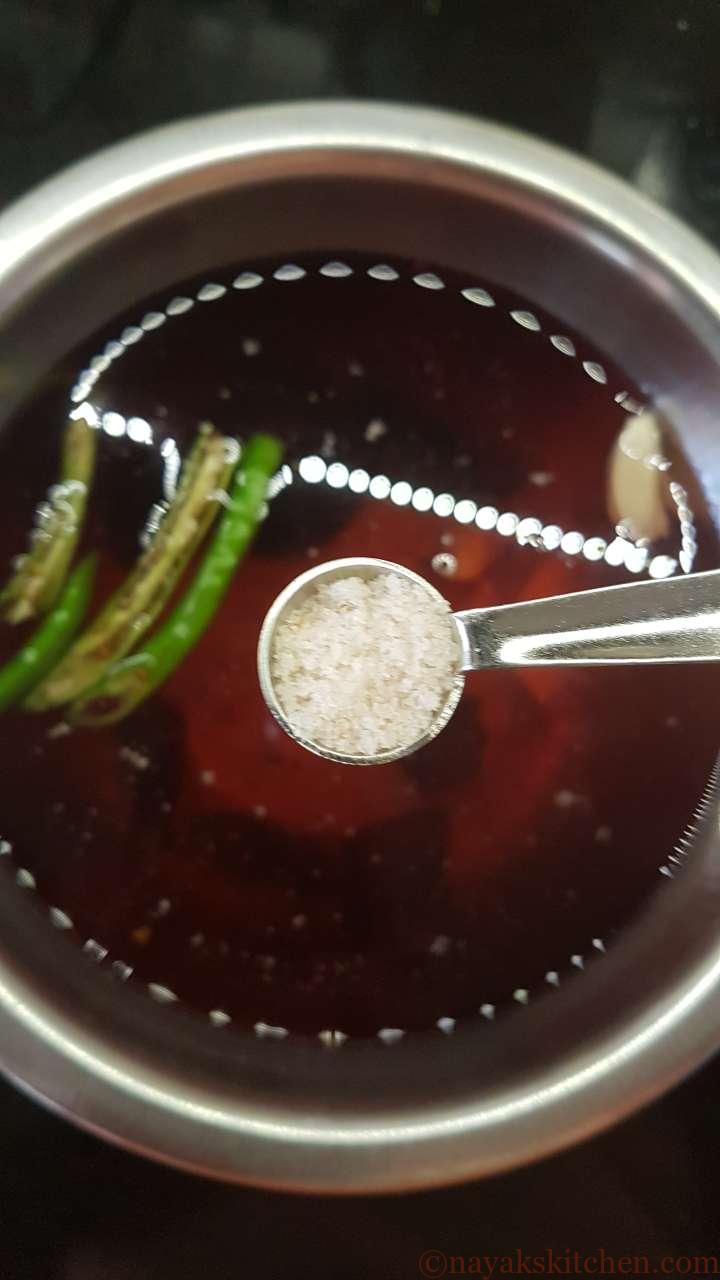
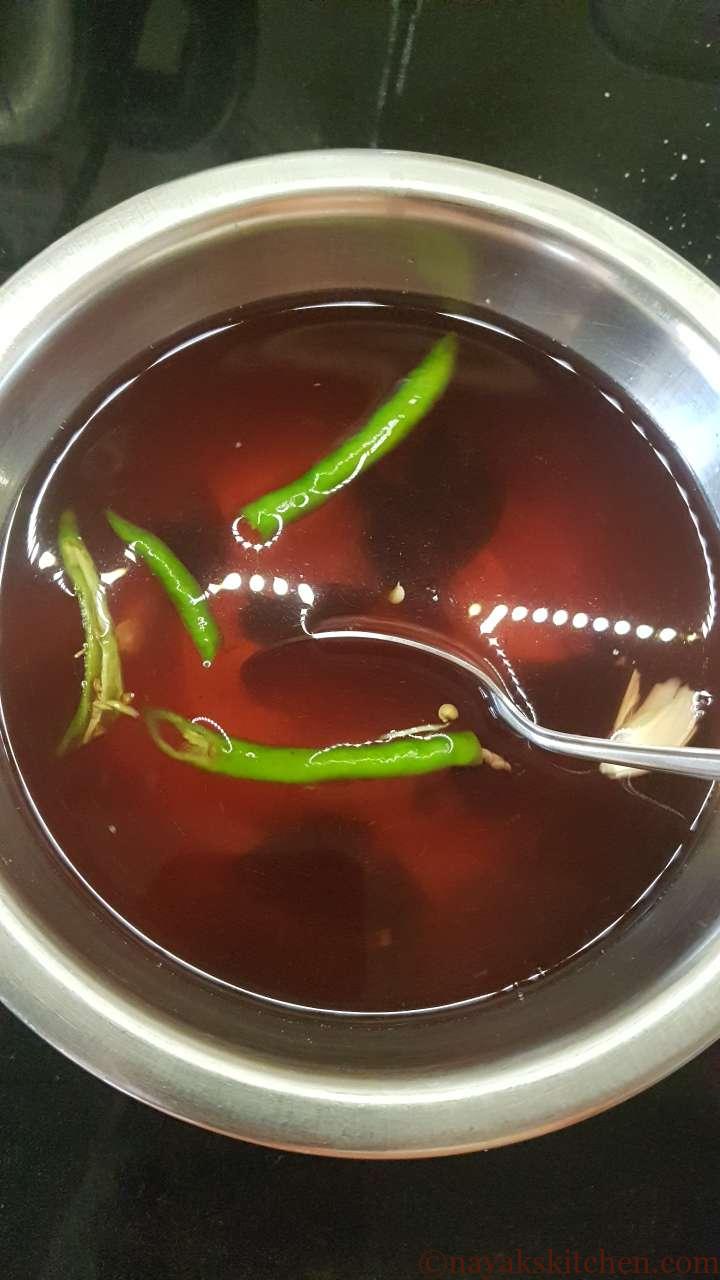
6. Lastly, add chopped coriander and mix well. Allow the kokum to rest for about half an hour for the flavours to infuse.
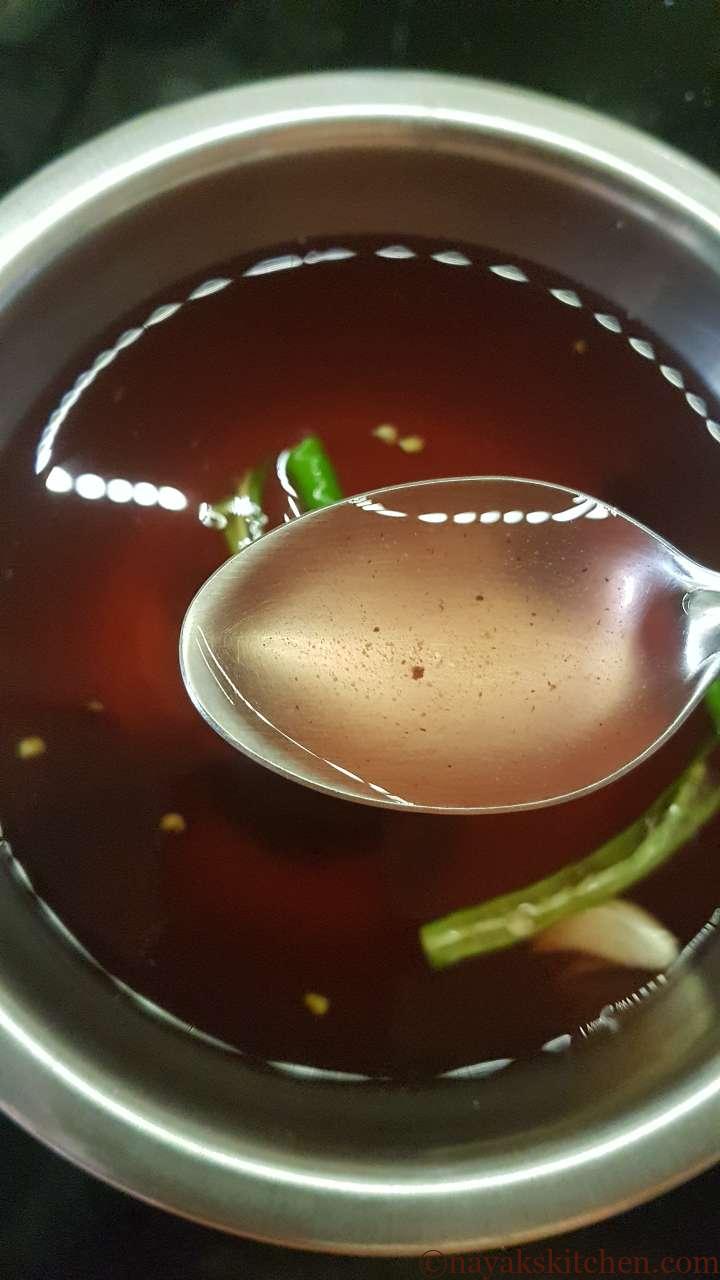

7. Serve tival with lunch or dinner or as a drink in summers.


Tival | Kokum Kadi | How to make Goan Kokum Curry?
Course: Digestive DrinksCuisine: GoanDifficulty: Very Easy4
people10
minutes10
minutesTival is a traditional, digestive drink made using dried kokum and usually served after a meal.
Ingredients
1 cup = 250 ml
1 tbsp = 15 ml
1 tsp = 5 ml
Kokum – 6-7 nos.
Green chillies – 1-2 nos.
Asafoetida (Hing) – 1/4 tsp
Salt – 1/2 tsp
Sugar – 1 tbsp
Garlic (optional) – 4 nos. crushed
Green coriander – 1 tsp
Water – 2 cups
Directions
- Add kokum or sola to fresh drinking water. (If you are using old or aged kokum, use warm water to get more kokum extract.)
- After some time, the kokum rinds will start releasing their extract. You will get a bright pink colour with fresh kokum.
- Add the slit green chillies and crushed garlic.
- Next add asafoetida (hing) and sugar.
- Finally add salt and mix everything well.
- Add chopped coriander and mix well. Allow the kokum to rest for about half an hour for the flavours to infuse.
- Serve tival with lunch or dinner or as a drink in summers.
Notes
- Kokum – The colour, taste and flavour of tival depend on the quality of kokum. Always preferably use fresh kokum. Aged kokum will not give a bright pink colour. In case your kokum is not fresh use warm water for soaking. Also, if your kokum is fresh you will need to add a few rinds else add more kokum to get a thick extract. So adjust accordingly.
- You can also use 1 tsp of kokum agal (Kokum extract) instead of kokum rinds.
- Green chillies – Adjust the green chillies as per your spice level and the heat of the chillies.
- Asafoetida (Hing) – Use good quality hing with a strong aroma.
- Garlic – The use of garlic is optional and you can skip it.
- Water – Since this is a no-cook recipe use fresh drinking water to prepare tival.
- Serving Suggestions – Serve tival along with lunch or dinner. You can remove the kokum, garlic and chillies before serving.
- Storing Suggestions – You can refrigerate the tival for a day.
- This recipe can be doubled or tripled.

